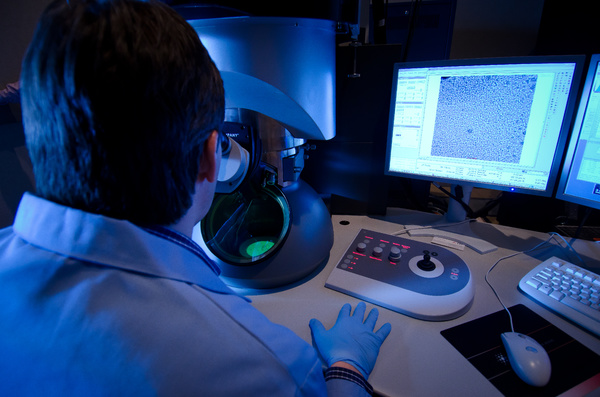|
researchers at the u.s. department of energy’s lawrence berkeley national laboratory have studied cadmium arsenide with the hopes of developing a topological matter, which would carry electrical current on its surface like a semiconductor but at room temperature.

researchers discovered elctrons running through cadmium arsenide. (wikimedia commons)
the study was based on the discovery of unusual behavior by electrons traveling across and through the surface of the inorganic semimetal. unlike graphene, which has similar electrical conductivity but is only one atom thick, cadmium arsenide offers similar properties while being three-dimensional. this could be a breakthrough material in the creation of smaller microchips that will not lose performance due to heat.
the researchers studied manufactured cadmium arsenide crystals that were only 150 nm thick. the electrical current was observed when subjected to a high magnetic field, according to a report from the berkeley lab. the goal is to engineer a material that will not have its own magnetic characteristics so that a field will not be necessary.
the research was published this past summer in nature. the abstract read:
“the dispersion of charge carriers in a metal is distinctly different from that of free electrons owing to their interactions with the crystal lattice. these interactions may lead to quasiparticles mimicking the massless relativistic dynamics of high-energy particle physics, and they can twist the quantum phase of electrons into topologically non-trivial knots—producing protected surface states with anomalous electromagnetic properties.
“these effects intertwine in materials known as weyl semimetals, and in their crystal-symmetry-protected analogues, dirac semimetals. the latter show a linear electronic dispersion in three dimensions described by two copies of the weyl equation (a theoretical description of massless relativistic fermions).
“at the surface of a crystal, the broken translational symmetry creates topological surface states, so-called fermi arcs, which have no counterparts in high-energy physics or conventional condensed matter systems. here we present shubnikov–de haas oscillations in focused-ion-beam-prepared microstructures of cd3as2that are consistent with the theoretically predicted ‘weyl orbits’, a kind of cyclotron motion that weaves together fermi-arc and chiral bulk states.
“in contrast to conventional cyclotron orbits, this motion is driven by the transfer of chirality from one weyl node to another, rather than momentum transfer of the lorentz force. our observations provide evidence for direct access to the topological properties of charge in a transport experiment, a first step towards their potential application.”
read more about the study at http://www.nature.com/nature/journal/v535/n7611/full/nature18276.html.
|